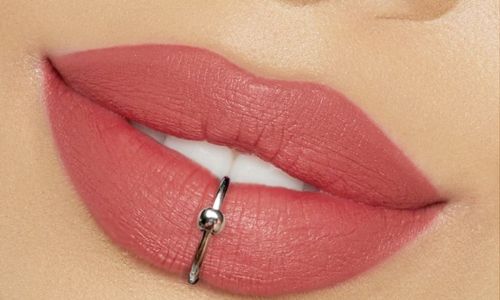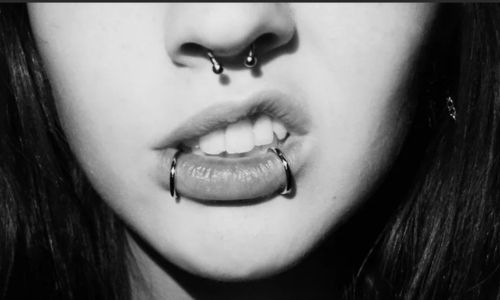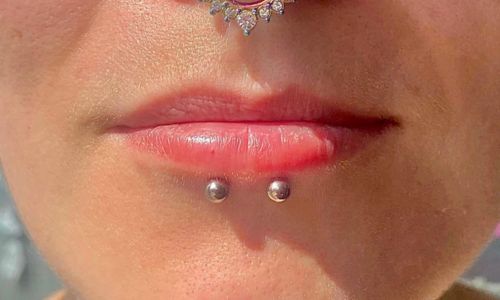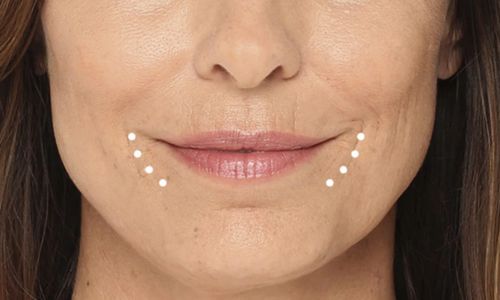Lip Piercing
Lip Piercing: Enhance Your Look with Confidence and Care
Lip piercings are a trendy and eye-catching form of body modification. From the classic labret to vertical labrets and medusa piercings, they offer a variety of ways to express your individuality. But before you take the plunge, here’s everything you need to know about lip piercings, from choosing the right type to aftercare and potential risks.
Types of Lip Piercings
Labret (vertical and horizontal)
The most common lip piercings, these go through the flesh below the lip, either vertically or horizontally. Vertical labrets are typically centered, while horizontal labrets can be placed off-center for a more edgy look.


Monroe
A single piercing placed above the center of the Cupid’s bow (the small dip in your upper lip).
Medusa
A centered piercing below the center of your upper lip.


Snakebites
Two symmetrical piercings on either side of the lower lip, usually placed vertically.
Spider Bites
Similar to snakebites, but positioned closer together towards the center of the lower lip.


Dolphin Bite
Two symmetrical piercings on the upper lip, placed near the corners of the mouth.
Marionette
Two piercings placed vertically at the corners of the mouth.

- Consider your facial features and the overall look you’re going for when selecting a lip piercing style.
- Research reputable piercing studios in your area. Look for studios with a clean, professional environment and experienced piercers who are members of the Association of Professional Piercers (APP).
- During the consultation, discuss your desired piercing placement, aftercare routine, and any concerns you may have. A qualified piercer will explain the procedure, answer your questions, and ensure you feel comfortable throughout the process.
- The piercer will mark the desired location with a surgical pen to ensure accuracy and symmetry.
- They will thoroughly clean your lip with a disinfectant solution.
- A sterile needle (not a piercing gun) will be used to create the hole. Needles offer more control and precision, reducing tissue trauma compared to piercing guns.
- The piercer will then insert the initial jewelry, typically a labret stud made from implant-grade titanium, surgical steel, or gold to minimize allergic reactions.
- Proper aftercare is crucial for optimal healing and preventing infection. Here’s a general aftercare routine, but always follow the specific instructions provided by your piercer:
- Clean the piercing site thoroughly 2-3 times a day with a saline solution or a piercing cleanser recommended by your piercer.
- Rinse your mouth with a mild antiseptic mouthwash (alcohol-free) after eating or drinking, especially sugary or acidic beverages.
- Avoid touching or playing with the piercing, and don’t change the jewelry prematurely. This can irritate the piercing and disrupt healing.
- Be mindful of snagging your piercing on utensils, straws, or while talking.
- Lip piercings typically take 6-8 weeks to heal fully, but it can vary depending on your individual healing process.
- Be patient and consistent with aftercare throughout the entire healing period to avoid complications.
- Infection is the most common complication. Signs of infection include redness, swelling, excessive pus, and tenderness around the piercing. See a doctor immediately if you experience any of these symptoms.
- Allergic reactions to certain metals in jewelry can occur. Opt for implant-grade titanium, surgical steel, or gold for initial jewelry.
- Bleeding, swelling, and discomfort are normal for a short period after the piercing. However, excessive bleeding or persistent pain could indicate a problem.
- Improper piercing techniques can lead to scarring, nerve damage, or tooth damage if the piercing is too close to the gum line. This is why choosing a reputable and experienced piercer is crucial.
- Age: There’s no legal age requirement for lip piercings, but some piercing shops may have restrictions. It’s important for the person getting pierced to be mature enough to understand the commitment and aftercare involved.
- Lifestyle: Lip piercings may not be suitable for everyone, especially those who participate in contact sports or play instruments that require pressing against the mouth.
- Professional Considerations: Lip piercings may not be appropriate in all professional settings. Consider your workplace’s dress code and company culture before getting a lip piercing.
With careful planning, proper aftercare, and by choosing a qualified piercer, you can enjoy your lip piercing for years to come.





